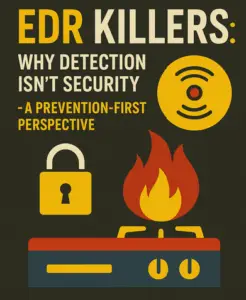In a recent episode of The Safety Brief, we dove into the critical red flags in email, phone, and online behavior, equipping end users with the knowledge to defend against cyber threats. Let’s recap the key takeaways and provide additional tips to strengthen your digital defenses. As we enter the holiday season, these are vital tidbits to pass along to your clients and ensure you’re utilizing, as well.
Email Security
When it comes to email security, staying vigilant is the key to protecting yourself from cyber threats. In our discussion, we highlighted the significance of being cautious about unexpected attachments, misspelled URLs, and unsolicited requests for sensitive information. Suspicious or altered email addresses should also raise red flags. Exercise caution with email attachments, even from seemingly legitimate sources, by verifying the sender’s identity and the legitimacy of the attachment before opening any file. Cybercriminals employ tactics to make their emails appear genuine, from replicating official logos to using convincing language. Always approach emails with vigilance and skepticism. Hover over links without clicking to reveal the URL and exercise extra caution with shortened URLs. Double-check the source before sharing sensitive information.
Phone
Recognizing red flags is crucial in the realm of phone scams and vishing attempts. Be cautious of unsolicited personal information or payment requests, calls from unknown or blocked numbers, and high-pressure tactics. Remember, you should never feel pressured to provide personal information hastily. Legitimate organizations do not engage in coercive tactics when seeking information. Differentiating between a legitimate call and a potential scam is a skill worth honing. Independently verifying the caller’s identity through official channels is essential. Trust your instincts, and if something feels off, don’t hesitate to hang up.
Online Behavior
Your online behavior can inadvertently expose vulnerabilities, making it essential to exercise caution. Avoid oversharing personal information, using weak passwords, and falling for social engineering tactics. Cybercriminals often employ social engineering techniques like pretexting and phishing to manipulate individuals into divulging sensitive information. Regularly reviewing and updating privacy settings on social platforms like Facebook and Instagram can significantly enhance your online security. Striking a balance between convenience and security is crucial. Practice using strong, unique passwords, enable two-factor authentication and be mindful of the information you share online.
In conclusion, our aim is to equip end users with the knowledge of these vital red flags and provide invaluable tips to strengthen their digital defenses. It’s important to stay informed and put these insights into practice. Join us in our next episode of The Safety Brief, where we’ll further delve into our Cybersecurity End-User Bootcamp segment.




